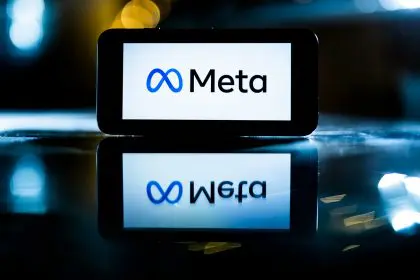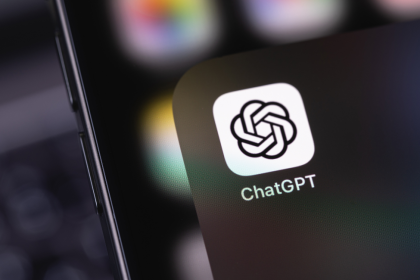The average American now spends approximately seven hours daily consuming digital content across multiple platforms according to data from eMarketer. Yet this immersion in digital environments has not automatically translated into the skills needed to interpret, evaluate, and safely navigate these spaces.
A Stanford University study revealed that 82% of middle school students struggled to distinguish between advertisements and news articles online, while over two-thirds of adults regularly share news without verifying its accuracy according to the Reuters Institute. These findings underscore a growing disconnect between digital access and digital literacy.
Source evaluation in the misinformation era
The first essential digital literacy skill involves critically evaluating information sources in an environment where traditional gatekeepers no longer filter content. This requires understanding how to identify website credibility beyond surface appearances.
Digital literacy experts recommend the SIFT method: Stop, Investigate the source, Find better coverage, and Trace claims back to their origins. This framework helps users pause before accepting information at face value, research who created the content, compare multiple sources, and track claims to primary materials.
Research from the Journal of Quantitative Description found that individuals trained in basic source evaluation techniques were 37% less likely to share false information online compared to those without such training. Despite its importance, a Pew Research study revealed that only 26% of Americans feel very confident in their ability to recognize trustworthy sources.
Understanding digital footprints and data privacy
The second critical skill centers on understanding digital footprints and managing personal data. With the average person generating approximately 1.7 megabytes of data per second according to Domo’s Data Never Sleeps report, comprehending how this information is collected, stored, and utilized has become increasingly important.
Digital literacy in this domain involves recognizing the difference between ephemeral and permanent content, understanding platform privacy settings, and recognizing how digital breadcrumbs accumulate across services. It also includes identifying secure websites, managing cookies, and recognizing potentially deceptive data collection practices.
The Cybersecurity and Infrastructure Security Agency recommends regularly auditing privacy settings, using unique passwords with managers, enabling two-factor authentication, and periodically reviewing connected applications. Despite these recommendations, only about one-third of internet users regularly adjust privacy settings according to the Internet Society.
Algorithmic awareness and filter bubbles
The third skill involves developing algorithmic awareness, understanding how content curation systems influence information exposure. With an estimated 70% of video views on YouTube coming from algorithmic recommendations according to the platform, recognition of how these systems shape perception has become vital.
Digital literacy in this domain includes recognizing confirmation bias, understanding how engagement metrics drive content promotion, and developing strategies to diversify information sources. Research from the Journal of Communication found that individuals aware of algorithmic curation were significantly more likely to seek alternative viewpoints compared to those lacking this awareness.
Practical approaches include following sources across ideological spectrums, periodically clearing search histories, using private browsing modes for certain searches, and intentionally engaging with content that presents different perspectives. Organizations like the Media Literacy Project recommend monthly “filter bubble challenges” where users deliberately explore content outside their typical consumption patterns.
Visual literacy in a multimedia landscape
The fourth skill centers on visual literacy, the ability to interpret, evaluate, and create visual media. With over 95 million photos and videos shared daily on Instagram alone according to Omnicore Agency, the ability to critically analyze visual content has become increasingly crucial.
This competency includes recognizing manipulated images, understanding how visual framing influences perception, and identifying emotional appeals in visual content. It also involves recognizing how image selection in news creates implicit narratives and how visual elements can mislead without technically containing false information.
Research published in Cognitive Research: Principles and Implications found that even individuals aware of photo manipulation techniques correctly identified altered images only 65% of the time. Organizations like the International Association of Visual Literacy advocate for educational approaches that teach systematic visual analysis, including consideration of context, creator intent, and technical manipulation markers.
Security awareness and scam detection
The fifth essential skill involves developing security awareness and the ability to recognize sophisticated digital scams. As phishing techniques have evolved from obviously fraudulent requests to highly targeted approaches using social engineering, distinguishing legitimate communications from malicious ones requires increased vigilance.
Digital literacy in this domain includes recognizing social engineering techniques, identifying secure connection indicators, and understanding common threat vectors. It also involves developing habits like hovering over links before clicking, verifying sender information, and cross-checking suspicious requests through independent channels.
According to the Federal Trade Commission, Americans lost over $5.8 billion to digital fraud in the past year, representing a 70% increase over the previous year. Despite this growth, a study from Google and the University of California found that even tech-savvy users failed to spot subtle phishing indicators approximately 45% of the time.
Constructive digital participation
The sixth critical skill involves understanding how to constructively participate in digital spaces. With approximately 4.66 billion social media users globally according to Datareportal, the collective impact of individual online behaviors has significant societal implications.
This competency includes recognizing how sharing patterns amplify certain content, understanding platform-specific etiquette, and recognizing the difference between productive disagreement and harmful engagement. It also involves awareness of how algorithms reward emotional reactions and how these incentives can distort discourse.
Research from the Yale Center for Emotional Intelligence found that individuals trained in constructive digital participation were 42% more likely to de-escalate tense online interactions and 38% more likely to verify information before sharing. Despite this impact, formal education on digital citizenship remains limited, with only 28% of school districts offering comprehensive digital literacy programs according to Common Sense Media.
Information management in an age of abundance
The seventh essential skill focuses on managing information abundance, developing strategies to find, organize, and retrieve relevant information while avoiding overwhelm. With an estimated 2.5 quintillion bytes of data created daily according to IBM, the ability to efficiently navigate this landscape has become vital.
This competency includes understanding advanced search techniques, evaluating information relevance, and developing personal knowledge management systems. It also involves recognizing cognitive biases that affect information processing and developing strategies to mitigate their impact.
Productivity research suggests that individuals with structured information management systems spend approximately 60% less time searching for information compared to those using ad hoc approaches. Digital literacy experts recommend techniques like deliberate content curation, spaced learning approaches for retention, and systematic note-taking methodologies.
The interdependence of digital literacy components
These seven skills function not as isolated competencies but as an interconnected framework that collectively enables effective navigation of digital environments. Research published in the Journal of Computer-Mediated Communication found that strength in multiple literacy domains correlated with significantly higher resilience against misinformation compared to isolated competencies.
Educational initiatives increasingly recognize this interconnection, with the International Society for Technology in Education advocating for integrated approaches that develop these skills simultaneously rather than as separate modules. This reflects growing understanding that digital literacy represents not a fixed achievement but an ongoing adaptation to rapidly evolving information ecosystems.
The most successful approaches embed these skills within authentic contexts rather than treating them as abstract concepts. For example, teaching source evaluation through analysis of current events proves more effective than generic credibility checklists. Similarly, security awareness develops more effectively through simulated phishing exercises than through passive instruction.
As digital environments continue evolving, with emerging technologies like synthetic media and increasingly sophisticated personalization, these literacy skills require continual refinement. Organizations like the National Association for Media Literacy Education emphasize that digital literacy represents a process rather than an endpoint, an ongoing commitment to thoughtful engagement with our shared information environment.
For individuals seeking to strengthen these competencies, numerous resources have emerged, from the News Literacy Project’s validation tools to the Digital Citizenship Institute’s community programs. These initiatives recognize that amid information abundance, the limiting factor is no longer access to content but the skills to meaningfully engage with it, making digital literacy perhaps the most essential competency of the contemporary era.
















